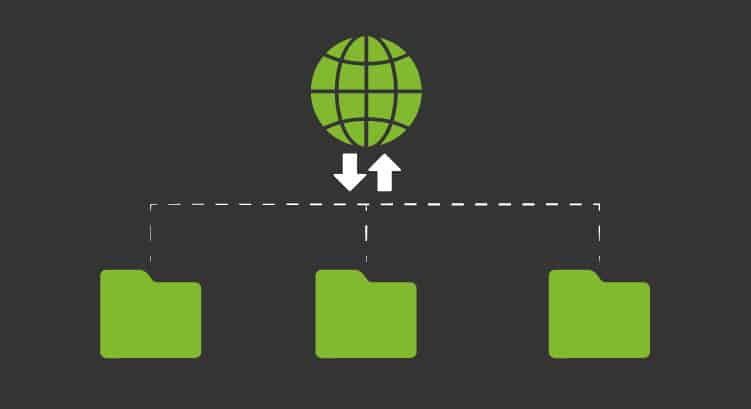File Transfer Protocol or FTP. Shall we start?
Our day to day is a constant investigation. When you were little, very small, you discovered the different names of the colors or the taste of the fruits; then, the pain of acne and your favorite rock bands; and later on, I don’t know, more complex things like the Inland Revenue and the File Transfer Protocol.
File Transfer Protocol, or FTP, is a procedure for moving files from one location on the network to another. And that’s it. The File Transfer Protocol is a standard network protocol used for transferring computer files between a client and a server on a computer network. This protocol is based on the architecture of a client/server model that uses separate data and control connections between that, the client and the server.
This File Transfer Protocol comes from afar, back in the seventies, when the first lights of the nets began to clarify the dawn. Long before modern networks, TCP-based IPs appeared in the early 80’s.
We can say that the File Transfer Protocol is doing well, in terms of popularity at least. It is the most popular one for transferring files over the Internet. An example is that, as of 2016, of the 4.3 trillion IP addresses created in IPv4 address space, some 22 million were FTP servers.
File Transfer Protocol: how it works
As noted above, this protocol works with a client and server model. We upload files from an FTP client to an FTP server. From there any client or application will be able to access them. The FTP server works with a resident program that will be in charge of possible FTP requests from clients.
When the resident program (daemon) has a request, a control session is configured for the purpose of logging in, and then establishing the connection.
With File Transfer Protocol there are two ways to log in.
- Authenticated mode: The client will need to verify his/her identity through a user and a password.
- Anonymous mode: Here the customer can use the user “anonymous” or “ftp” and provide an email as a password.
When a control session is configured, the server will, without any major problem, execute any requested command.
File Transfer Protocol: FTP Server
Like we said, the game is about servers and clients.
We consider an FTP server to be a special program that is run on a server computer that is (normally) connected to the Internet. I say “normally” because it can be connected to other types of networks. The task of this server is to give permission for data exchange between servers/clients.
These server programs, as a general rule, are not usually located on private computers. An ordinary user will simply use FTP to remotely connect to one of them for information exchange.
If we think about what the most common applications of FTP servers might be, we may come to the conclusion that they are usually web hosts. Customers use the service, they upload their web pages, their files and their stuff and that’s it. We can also think about backups. Major companies that keep their most important files through transfer protocols where data is transmitted encrypted.
File Transfer Protocol: FTP Client
When a computer does not have FTP function it will be necessary to use an FTP client program. And what is this? Well, an FTP client is a program that we install on the user’s computer and in which we will use the above protocol to connect to an FTP server and thus be able to transfer files. We don’t care if it’s to download or to upload these files.
To use an FTP client we only need to know the name of the file, the computer/server in which it resides, the computer to which we want to transfer the file and the folder in which it is located. All this using as an example the case of wanting to upload the file to the server.
There are basic FTP clients, in console mode, that come integrated in some operating systems: Microsoft Windows, DOS, GNU/Linux and Unix, for example. But although there are already many browsers that have FTP, it is better, when connecting to non-anonymous FTP servers, to use a client program.
Once you’re in the middle of technology, would you like to take a look around? Do you want to go even further in the world of technology? How about taking a few minutes to find out what computer system monitoring is and why it’s also very important?
Monitoring systems are responsible for monitoring technology (hardware, networks and communications, operating systems or applications, for example) in order to analyze its operation and performance, and to detect and warn about possible errors. And this leads us to Pandora FMS, which is the great tool thanks to which this blog is possible.
Pandora FMS is a flexible monitoring software, capable of monitoring devices, infrastructures, applications, services and business processes.
Do you want to know better what Pandora FMS can offer you? Find out here.
If you have more than 100 devices to monitor you can contact us through the following form.
Also, remember that if your monitoring needs are more limited you have at your disposal the OpenSource version of Pandora FMS. Find more information here.
Don’t hesitate to send your questions. The Pandora FMS team will be delighted to help you!
Pandora FMS’s editorial team is made up of a group of writers and IT professionals with one thing in common: their passion for computer system monitoring. Pandora FMS’s editorial team is made up of a group of writers and IT professionals with one thing in common: their passion for computer system monitoring.


















